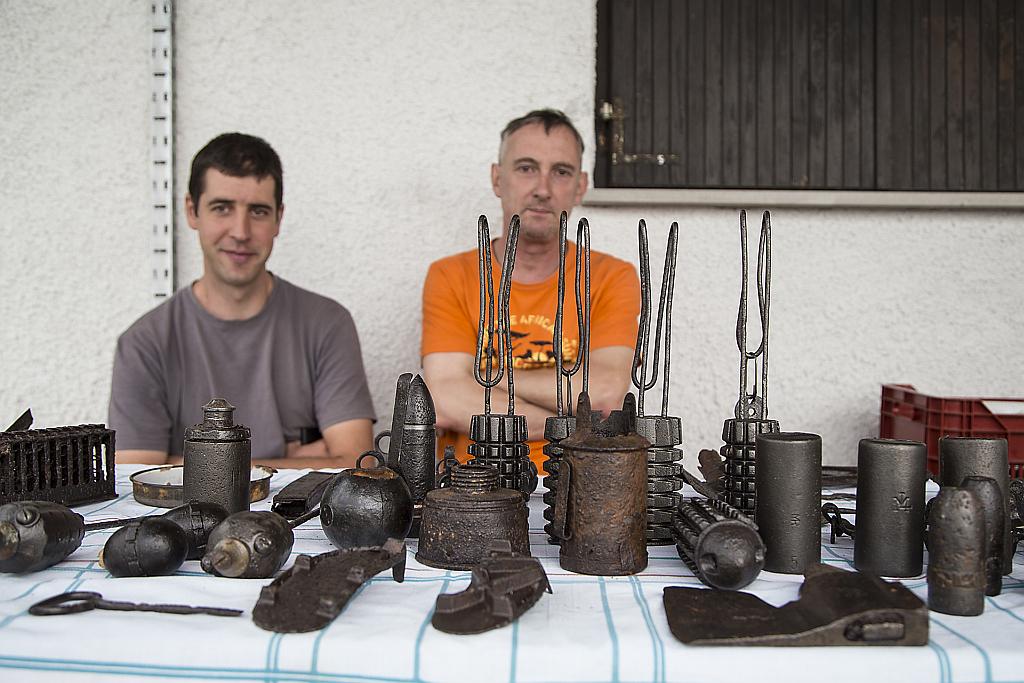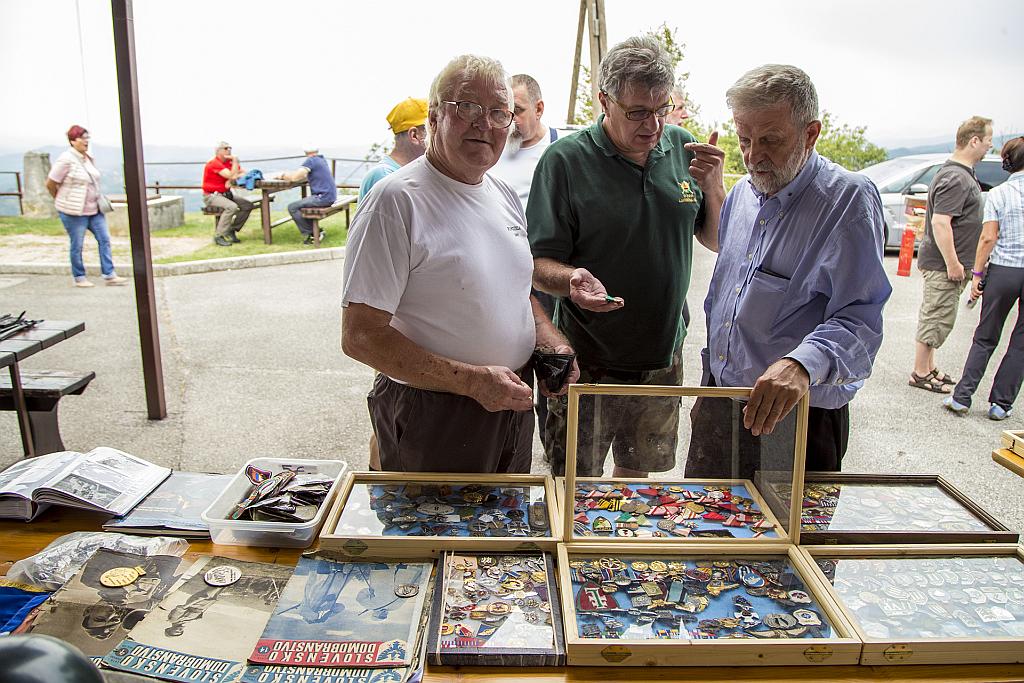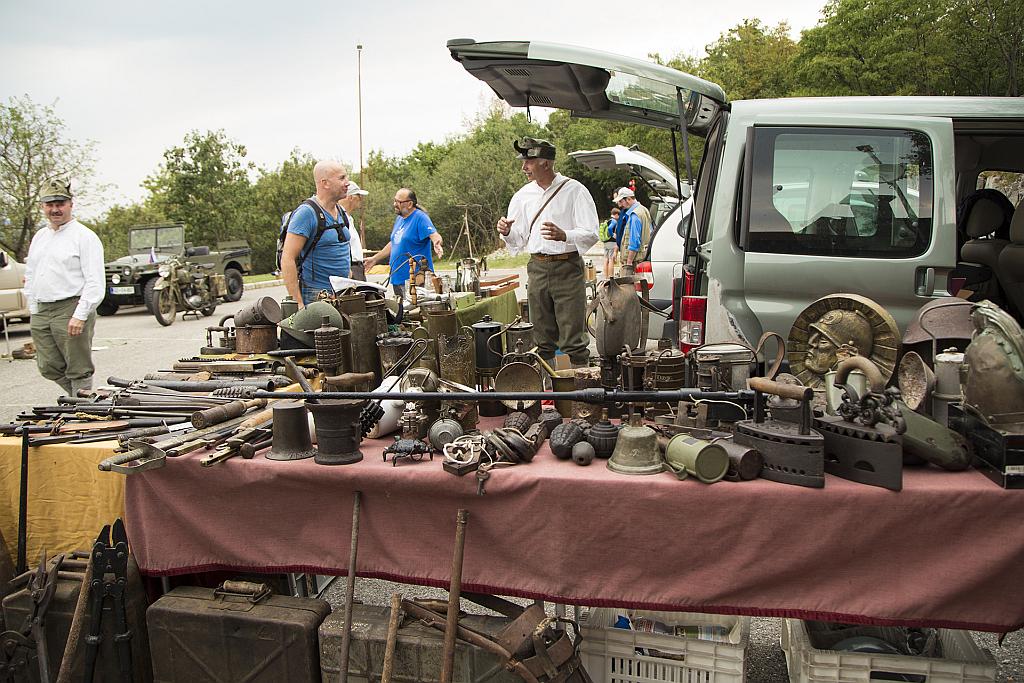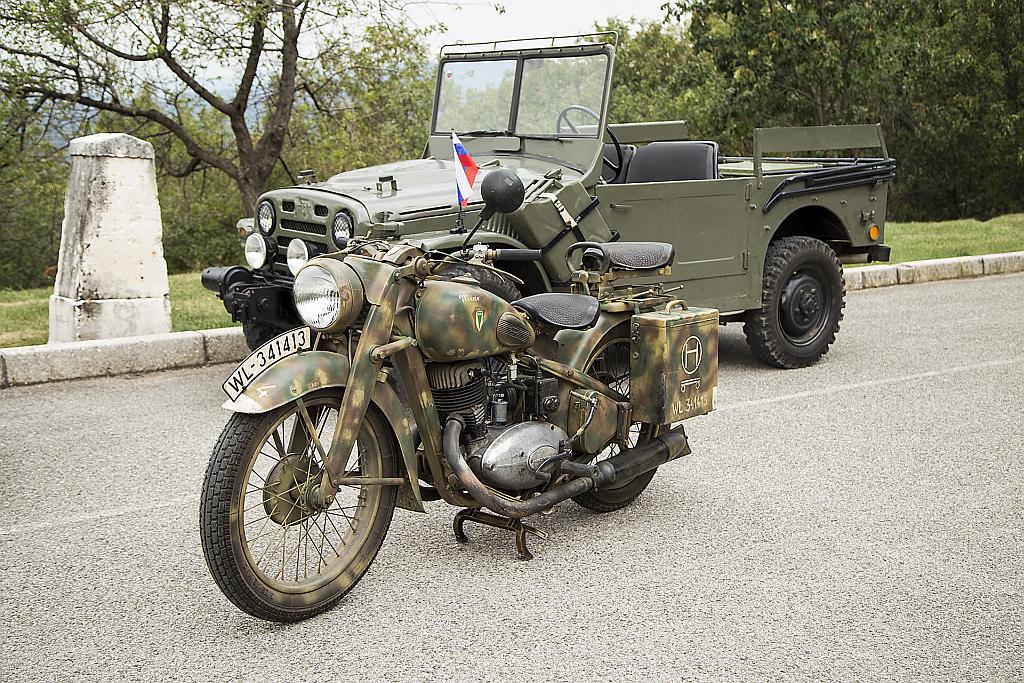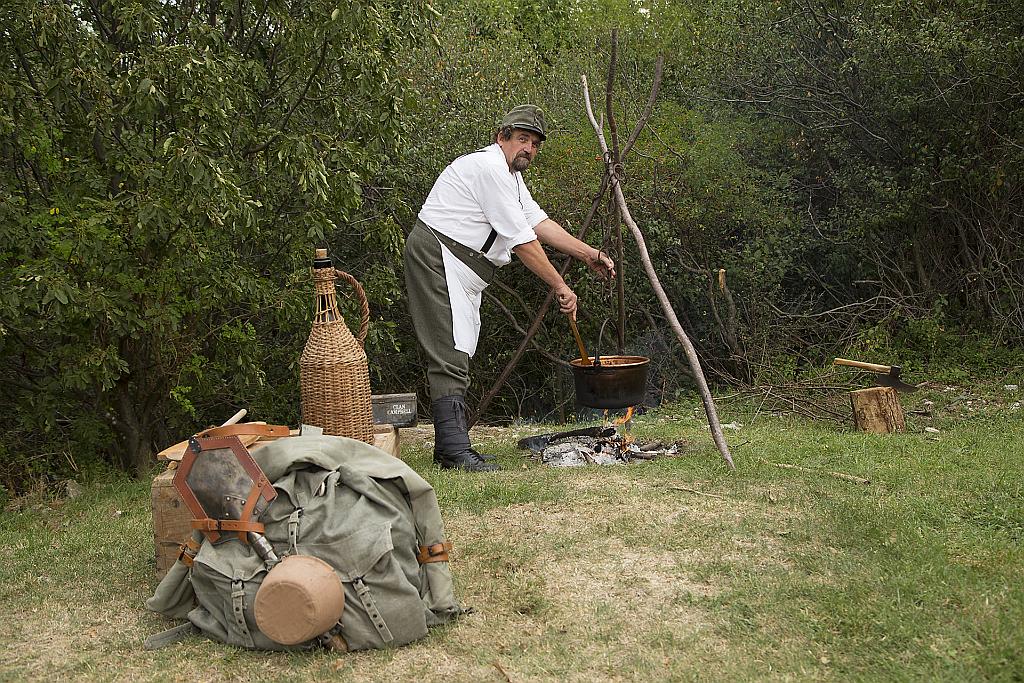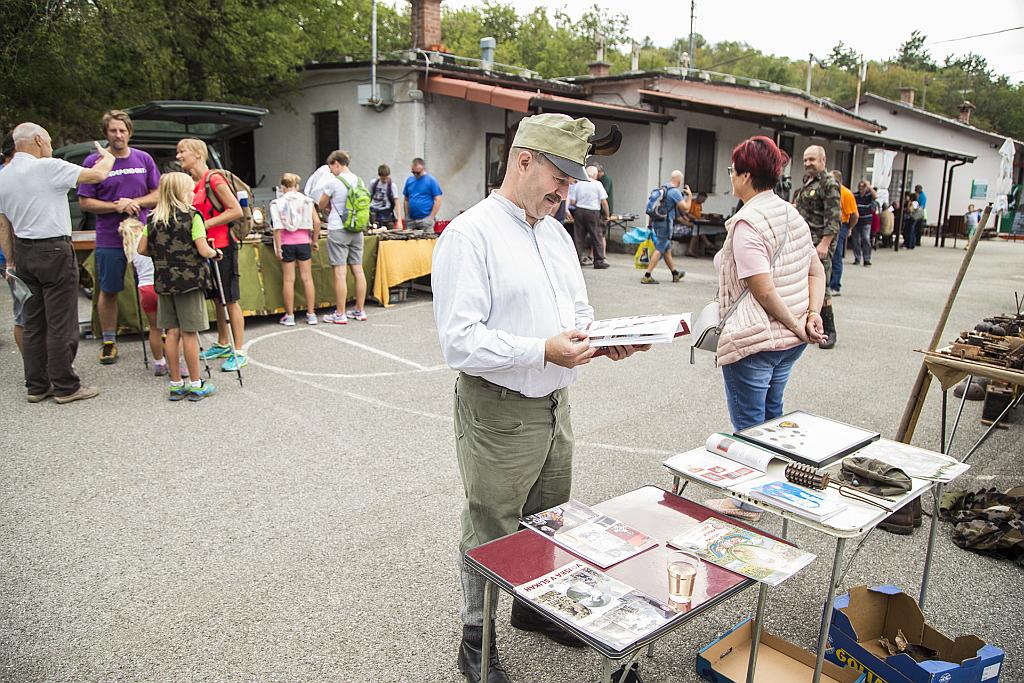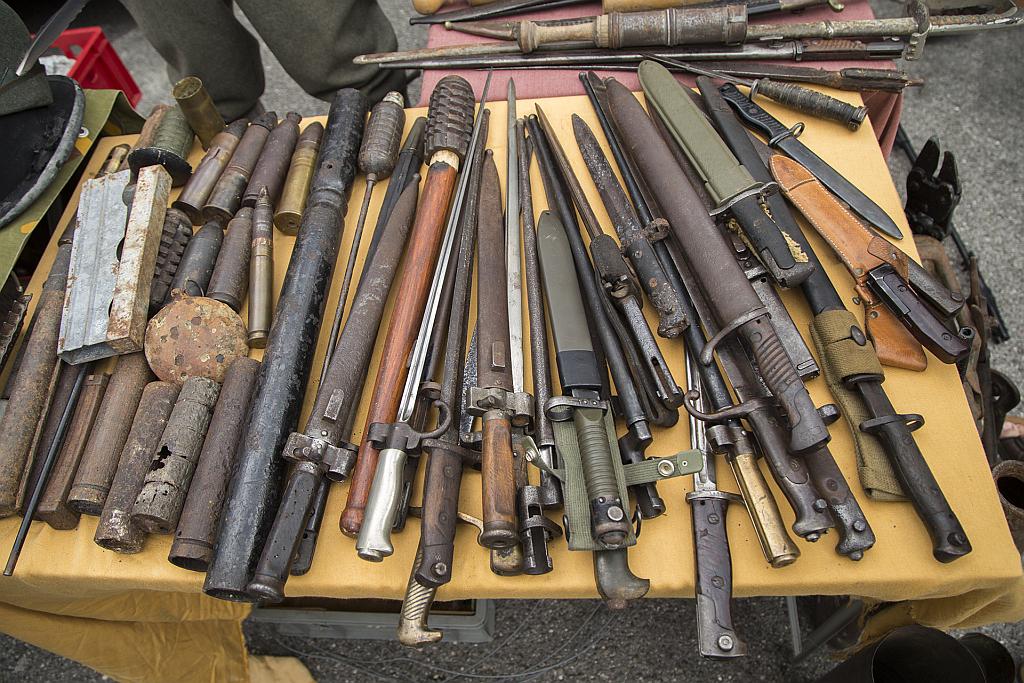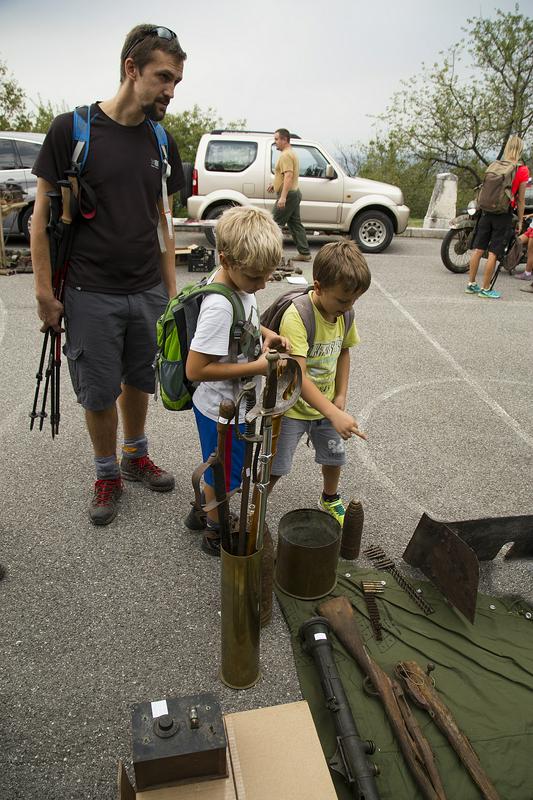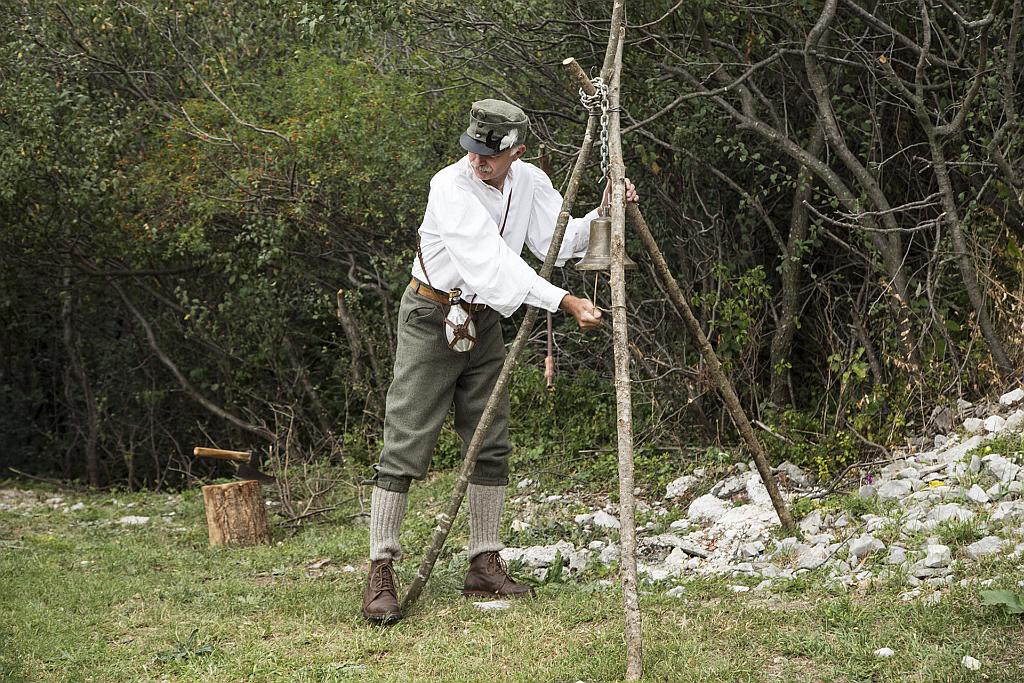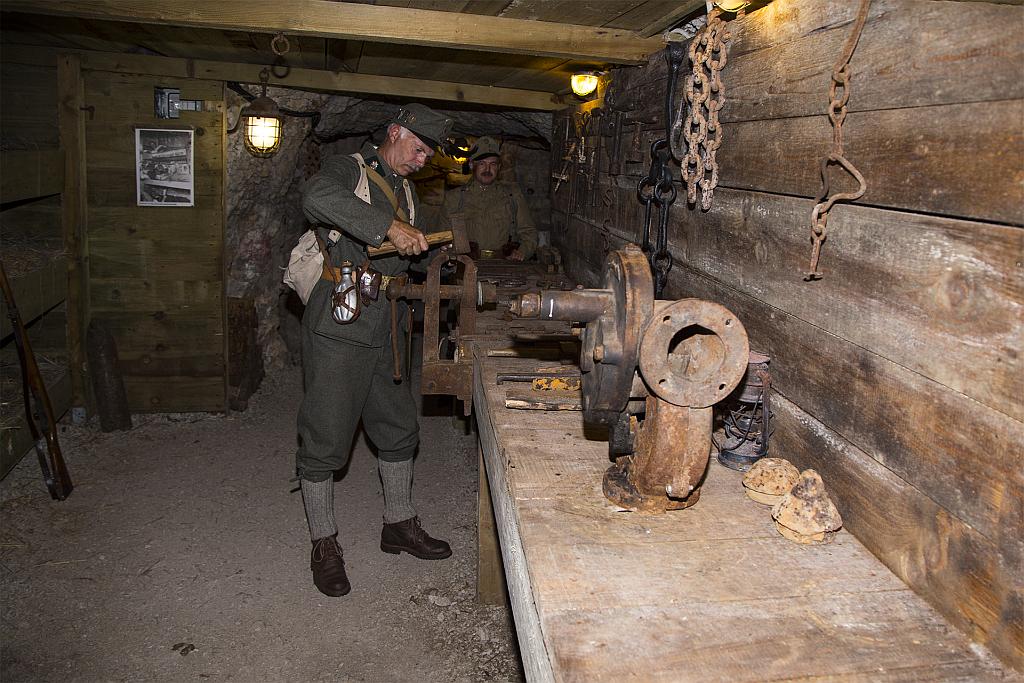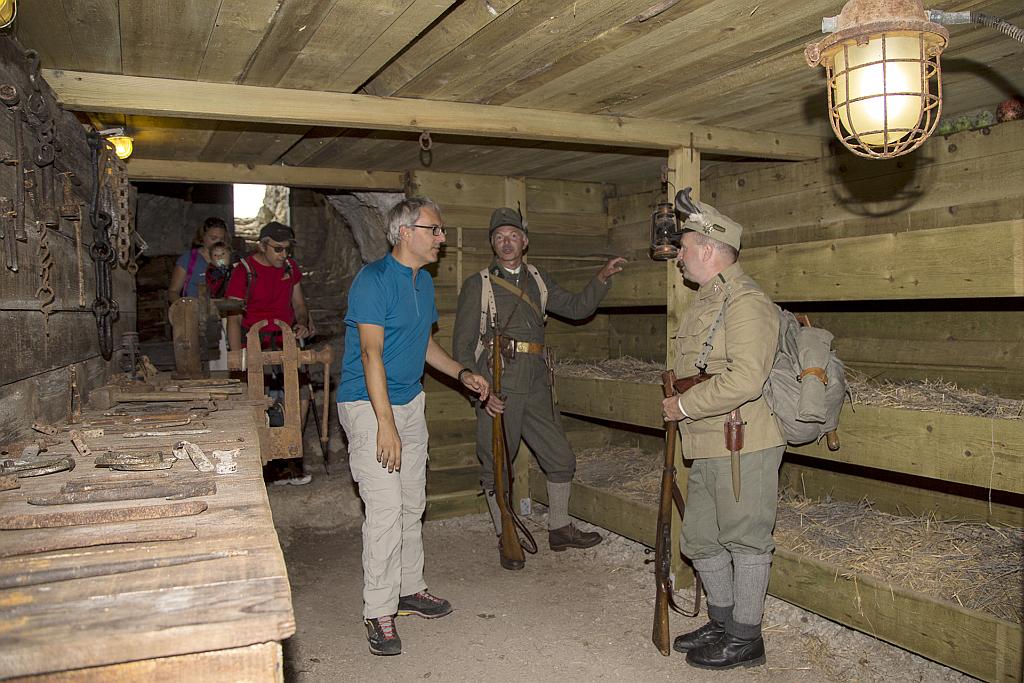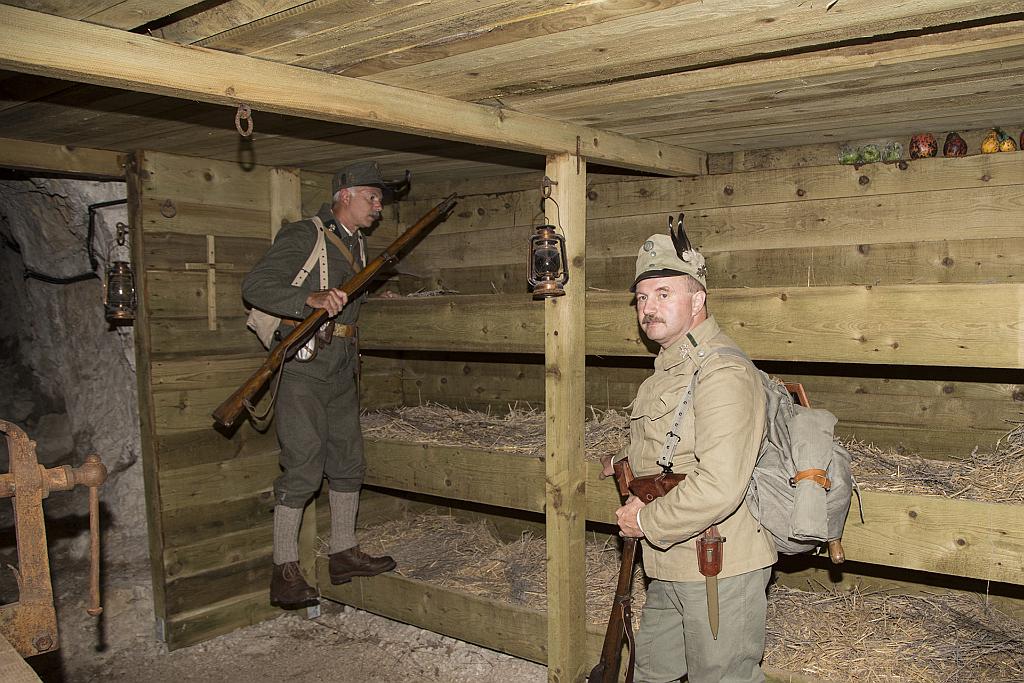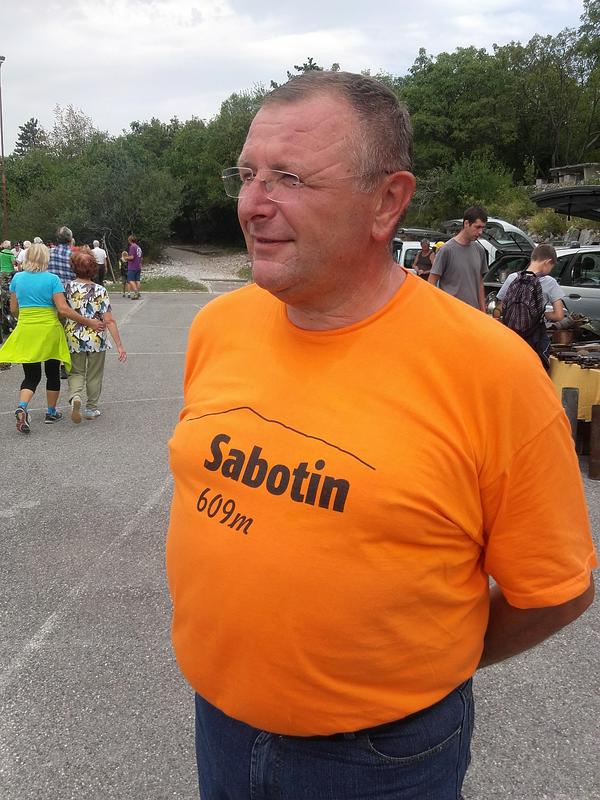
It is the hundredth anniversary of the fall of Sabotin, and consequently of Gorizia, the bloodiest fights on the steep rocky ridge of this borderline mountain. The military trenches and caverns were renovated - all with the purpose to preserve the memory of the horrors of war, and issue a loud warning "Never again!"
The collectors of the artifact from the Soča Front gathered on the top of the mountain which bled to death a century ago. Egon Valantič from the Soča Front Society explained: "For the sixth year in a row we are trying to present the military life with its suffering, hope and despair at this authentic location, using one hundred years old artifacts, used by the soldiers at that time. There are less and less weapons on our stands, and more and more soldiers' personal objects, testifying of the hard military life. More and more collectors appear dressed in original uniforms of regiments which had fought at the Soča Front. Our focus is on the man caught in the war, and not on ironware."
Sabotin, carved with caverns and trenches
Due to its strategic location, Sabotin was of the utmost importance for the Austro-Hungarian defence in the Gorizia area. It was a cruel "military home" to hundreds of Austro-Hungarian soldiers. More than 600 soldiers, and 80 mules, were stationed at one time in this system of underground caverns carved in bedrock, in nine levels - floors ranging from the top along the steep slope towards the foot of the mountain, Bogdan Potokar, the administrator of the Sabotin Peace Park explained.
30,000 visitors this year
Bogdan Potokar, with some enthusiasts of the First World War artifacts, is working on an open-air museum on the Slovenian side of Sabotin as well, at the location where the Peace Park was opened in 2005. More than one kilometre of the system of underground caverns and trenches has been renovated, mostly the closest complexes of the Austro-Hungarian caverns serving as living quarters, and the Italian caverns housing mortars at the top of the rocky ridge. This year more than 30,000 visitors from all the continents have already visited the summit of Sabotin. The guided tour usually lasts one hour and a half, but Bogdan's interesting stories usually keep the visitors' attention much longer.




















































